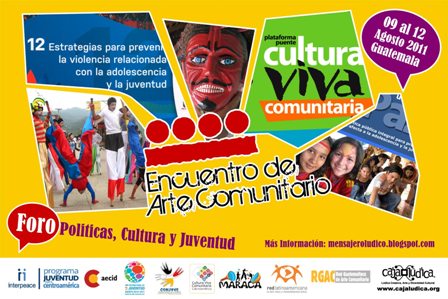Prevent violence. Give youth a voice!

The recent violent events across the United Kingdom are a source of major concern. Violent opportunists are seizing this moment to spread chaos. But while this criminal behavior must be condemned in the harshest terms, we must also avoid falling into the trap of defining these events as reckless thuggery.
The source of the issues making the headlines in recent days runs deeper than the images of anarchic youngsters on looting and burning sprees.
“We would be ignoring an underlying and legitimate current of frustration that flows in many young people across the world today,” points out Scott M. Weber, Director-General of Interpeace, an international peacebuilding organization.
“Youth are more disillusioned today than in recent memory. If we fail them and if they feel that society is letting them down, they will become a powerful destabilizing factor. We need to reach out to them, to make their voices audible and to listen to their grievances, their hopes, their fears and their ideas.” - Scott M. Weber, Director-General, Interpeace
Across the Atlantic, the problem of youth violence has been on the surface for years. Interpeace has been working on the issue in Central America since 2007.
Scott adds: “Youth violence is by no means a new phenomenon, but it is a powerful indicator of the failure of society to take young people sufficiently into account. A lack of jobs, a sense of hopelessness and the disconnect with the rest of society is what is making young people turn to other networks to find their stability and to define themselves.”
The typical iron-fisted approach, Mano Dura, adopted by governments in the region has been known to include actions that violate human rights, and are ultimately counter-productive. Violence rates continue to spiral and today El Salvador, Guatemala and Honduras are known to be some of the most dangerous parts of the world.
The issue of youth violence is now being looked at differently
Interpeace, with over 300 peacebuilders around the world, is enabling societies to reject violence by giving marginalized groups a voice.
“We bring together all levels and sectors of society, so proposals for policy development can be developed collectively,” explains Isabel Aguilar who is based in Guatemala and is the organization’s Director of the Central American Youth Programme.
Across El Salvador, Guatemala and Honduras advice and counsel are now coming from those most at risk. They are the young people who are both the victims and perpetrators of violence. Their ideas are being incorporated into suggestions for policy changes that are being taken to the governments concerned.
Social and economic stimulus, taking into consideration the well-being of young people form part of the primary prevention proposals. Extending further – the policy proposals support those young people most at risk: abandoned and street kids; communities that have been marginalized and show a higher incidence of violence; and those already in the prison system.
Putting the right heads together to create a culture of peace
Today, Friday 12th August, is another day for the Interpeace initiative in Guatemala. 120 young people, civil society representatives and government officials from across Central America, Brazil and Cuba are coming together for the fourth and last day of the Ninth Community Arts Meeting which includes a regional forum on politics, culture and youth.
“We live in a region where even hugs hurt. And arts helps to heal the wounds that a culture of violence has inflicted on us. Art and performance help us to express ourselves, be listened to. Our ideas are understood. From this basis, we can build a culture of peace.”
- Billy Ochoa, participant and member of the Caja Lúdica
“Without listening to those at risk we can’t hope to find long term solutions to the violence in our region. Young people and kids need to feel comfortable in order to be able to express themselves, and that isn’t usually in a dry speech. They send their messages via artistic performance. Its drama, dance, music and this is what this event has been about,” details Isabel.
This meeting is part of the Interpeace initiative in the region. The organization has also recently published and presented to the Guatemalan Government the first in a series of prevention policy proposals, 12 Strategies for Youth and Youth Gang Violence Prevention for Guatemala (PDF, Spanish). This includes the voices of people from 37 institutions, 59 organizations and 35 civil society and youth organizations.
The second set of proposals (PDF, Spanish) focuses on El Salvador.
“It is only with a holistic approach that we can tackle the issues of youth related violence. Violence does not happen by accident. It is the result of social, cultural, economic and political tensions that run deep in society,” Aguilar adds.
